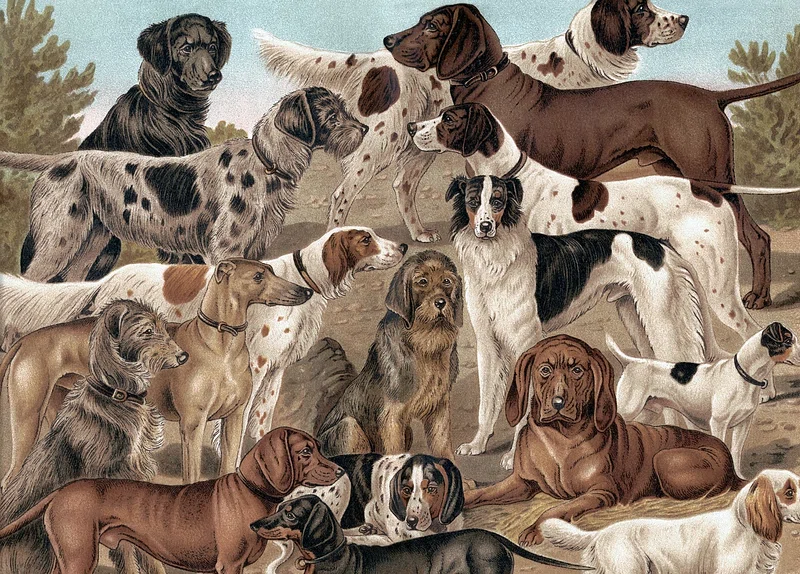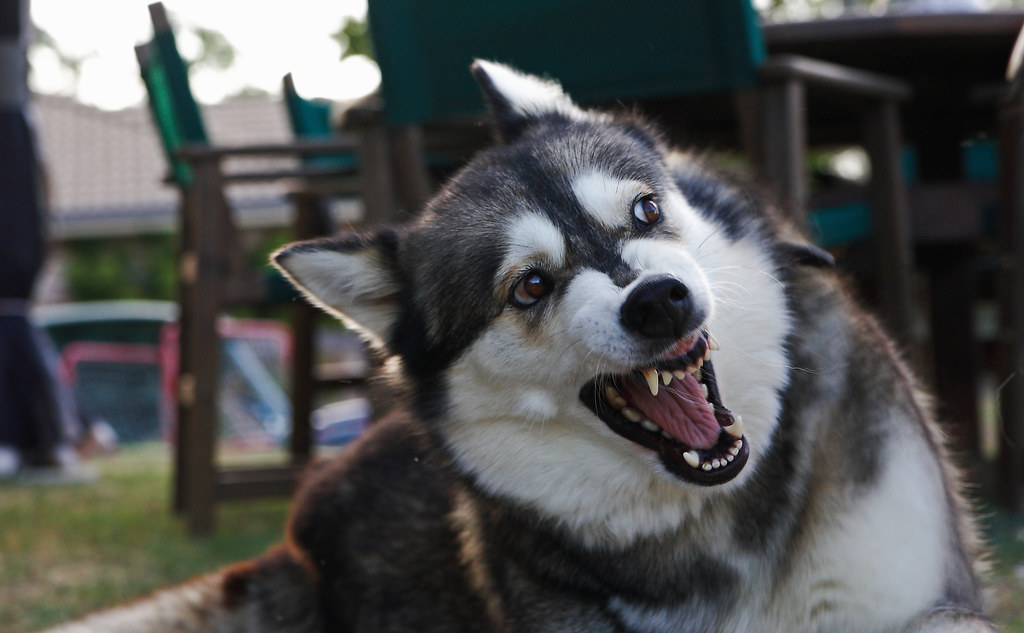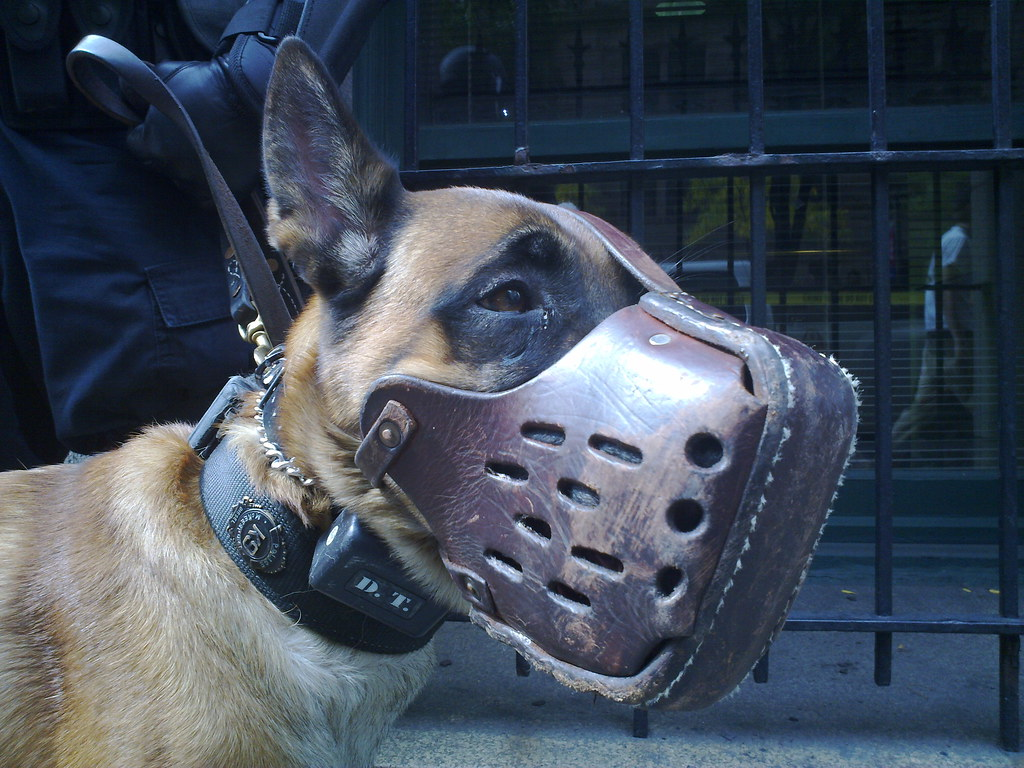1. Choke Chains and Prong Collars

Wikimedia Commons
Choke chains and prong collars were once considered standard tools for training dogs, thought to correct behavior through discomfort or pain. However, modern research has shown that these tools can cause physical harm, emotional distress, and long-term behavioral problems. Dogs who are trained with choke or prong collars can develop anxiety, aggression, and fear-based behaviors. These outdated methods are now widely condemned by trainers and veterinarians alike, who advocate for positive reinforcement techniques instead—rewarding good behavior rather than punishing the bad.
2. Tying Dogs Outside for Long Periods

iStock
Tying a dog outside, often for hours on end, was once a common practice, especially for dogs that were considered “yard dogs.” This practice isolates dogs from their family, deprives them of social interaction, and can lead to anxiety, depression, and even physical harm. Dogs left tied outside are vulnerable to extreme weather, accidents, and attacks by other animals or people. Thankfully, we now understand that dogs are social creatures who need to be part of the family and live inside with their humans, where they can thrive.
3. Dog Fights as Entertainment

iStock
Dog fighting was once considered an acceptable form of entertainment, especially in certain communities. Dogs were bred, trained, and forced to fight each other in brutal, bloody contests. This practice, often done for money or status, is one of the most horrific forms of animal cruelty. The trauma caused to the dogs is immense, and many end up with severe injuries or are euthanized. Nowadays, dog fighting is illegal and widely condemned, but its legacy continues to highlight just how far society has come in recognizing the importance of animal welfare.
4. Shock Collars for Training

YouTube
Shock collars, designed to deliver an electric shock to a dog as a punishment for unwanted behavior, were once marketed as an effective training tool. In reality, shock collars cause immense stress and anxiety in dogs, often leading to fear-based aggression or a breakdown of the bond between dog and owner. Experts now agree that shock collars are cruel and ineffective, as they don’t address the root cause of behavioral issues and can lead to long-term emotional trauma. Positive reinforcement techniques are now the preferred, humane method for training dogs.
5. Leaving Dogs in Hot Cars (Even in Milder Conditions)

Flickr
Leaving a dog in a hot car used to be something many people didn’t think twice about—especially in cooler weather. However, even in mild temperatures, a car can quickly become a death trap for dogs, as they can’t regulate their body temperature the way humans can. Dogs left in hot cars are at risk of heatstroke, brain damage, or death. This practice is now widely recognized as neglect, and laws have been put in place in many areas to protect animals from this dangerous behavior. No dog should ever be left in a car, regardless of the temperature outside.
6. Overbreeding for “Ideal” Traits

Rawpixel
In the past, breeding dogs for “ideal” physical traits often resulted in extreme overbreeding, leading to genetic issues and health problems for the dogs. Practices like inbreeding or breeding for certain traits, such as the flat faces of brachycephalic breeds (e.g., Bulldogs or Pugs), led to dogs that were predisposed to breathing problems, joint issues, and even heart disease. Today, we know that responsible breeding practices focus on the health and well-being of the dog, aiming to eliminate genetic defects rather than perpetuate them.
7. Kicking or Hitting Dogs as Punishment

Flickr
Physical punishment, such as kicking or hitting a dog for bad behavior, was once commonly used by owners who didn’t know any better. Not only is this method inhumane, but it also teaches dogs to fear their owners rather than respect them. Dogs trained through fear are more likely to develop aggressive tendencies, anxiety, or behavioral issues. Today, we understand that positive reinforcement, patience, and consistency are the keys to building a trusting and cooperative relationship with dogs. Physical punishment has no place in modern dog care.
8. Keeping Dogs in Small Cages for Hours

Flickr
Many dogs were once kept in small crates or cages for extended periods of time, either for confinement or to prevent them from roaming the house. While crate training is still used for short periods as a safe and comfortable environment, confining dogs to cages for long hours without proper exercise or attention is cruel. This practice leads to physical and mental distress, including muscle atrophy, anxiety, and destructive behaviors. Dogs need regular exercise, mental stimulation, and companionship to be happy and healthy.
9. Pruning Dogs’ Tails or Ears

Flickr
Tail docking and ear cropping were once common practices in certain breeds to conform to “standards” or for supposed health reasons. These procedures are painful and unnecessary, and they often result in complications or permanent physical and emotional trauma. In many parts of the world, tail docking and ear cropping for cosmetic reasons are now illegal, as they are seen as unnecessary and cruel. The focus has shifted to preserving the natural, healthy bodies of dogs and respecting their physical integrity.
10. Leaving Dogs Alone for Days at a Time

Wikimedia Commons
In the past, it was common for dogs to be left alone at home for extended periods, sometimes for days, with little human interaction. This neglectful behavior caused dogs to develop separation anxiety, destructive behaviors, or become withdrawn. Dogs are pack animals that thrive on companionship, and leaving them isolated for long stretches is emotionally damaging. Now, we recognize that dogs need regular attention, exercise, and socialization, and it’s our responsibility to ensure they’re not left alone for extended periods without proper care.
11. Using Muzzles as a Form of Punishment

Flickr
While muzzles can be an essential tool in certain situations, they were once used as a form of punishment for dogs with behavioral problems. The idea was that muzzling a dog would stop it from barking or biting, but this only caused distress and fear. It didn’t address the underlying issues or help the dog learn better behaviors. Today, we understand that muzzles should only be used for safety in specific circumstances and not as a form of punishment or containment.
12. Over-exercising Puppies

GetArchive
While exercise is vital for dogs, over-exercising puppies in their formative months was once seen as a way to “toughen them up.” This practice can damage a young dog’s developing joints, bones, and muscles, leading to lifelong health issues. Today, we recognize the importance of age-appropriate exercise and the need to give puppies time to grow and develop safely. Overworking a puppy physically can cause irreversible harm, and it’s essential to let them grow at their own pace with gentle, moderate activity.
13. Declawing Dogs

Freerange Stock
Declawing is a painful, unnecessary procedure that removes a dog’s claws, often for cosmetic reasons or to prevent scratching. While declawing is illegal in many countries, it was once a common practice. This procedure causes pain, mobility issues, and emotional distress for the dog. It also eliminates the dog’s ability to defend itself or climb if needed. Today, we understand that providing dogs with proper outlets for their natural behaviors, like scratching, is a far more humane solution.
14. Leash Pulling without Training

Flickr
Using a leash without any proper training was once considered acceptable. It was common for owners to drag their dogs along by the collar, expecting them to “learn” to walk nicely by simply being led. This can cause neck injuries, frustration, and anxiety for the dog, especially if done frequently. Now, we know that proper leash training is essential for both the safety and well-being of the dog and their owner. Positive reinforcement methods teach dogs how to walk on a leash without pulling, making the walk enjoyable for everyone.


